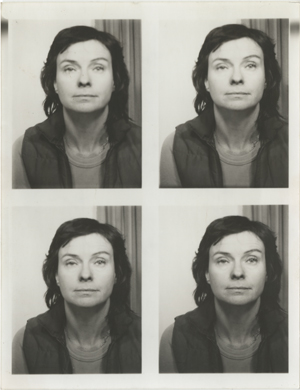

Carolyn A. Durham, Inez K. Gaylord Professor of French and Comparative Literature at the College of Wooster, spent the month of June (2011) at the Harry Ransom Center on a fellowship. Her research in the Diane Johnson collection informs her book, Understanding Diane Johnson, which will be published by the University of South Carolina Press in 2012 as part of a series on “Understanding Contemporary American Literature.”
During the summer of 2011, I had the good fortune to spend a productive and fascinating month in residence at the Harry Ransom Center thanks to a research fellowship funded by the Center’s Filmscript Acquisitions Endowment. The extensive holdings of the Diane Johnson collection, which reflect the remarkable diversity of the novelist’s work in biography, criticism, reviewing, screenwriting, and fiction, allowed me to complete Understanding Diane Johnson, a biographical and critical study that will be published in 2012 by the University of South Carolina Press.
Johnson is always significantly concerned with the shape and form of her fiction, and the Ransom Center holdings allowed me to compare different versions of her manuscripts so that I could better understand her strategies for composition and revision. I was able to see the effect that her work in screenwriting, beginning with the co-writing of The Shining with Stanley Kubrick, had on the drafting of her novels, whose outlines increasingly resemble cinematic storyboarding. I also discovered that she habitually outlined classical novels while she was working on her own. One folder, for example, juxtaposed preliminary plans for The Shadow Knows with several outlines of Jane Austen’s Emma, a fascinating pairing given Johnson’s training as a Victorian scholar. At the same time, the sequences and charts she designed while working on Lying Low confirmed in interesting ways the affinity that she has often expressed for the narrative innovation practiced by the French New Novelists.
Because Johnson writes novels of manners that focus on the concept of America, cultural context is extremely important in the interpretation of her writing, and the Ransom Center’s collection provided me with significant data about what she was thinking and experiencing throughout her life. Johnson’s papers range from elementary school coursework to childhood and adolescent diaries to college and graduate school papers and lecture notes from her 20-year career as a college professor to such unexpected treasures as a 1968 letter from Hubert Humphrey asking her to reconsider her decision not to vote for him, a letter from Johnson objecting to being overcharged for gas written in the same ironic voice evident in her fiction, and an account of the summer she spent as a Mademoiselle guest editor, made famous by Sylvia Plath’s The Bell Jar. Even knowing that Betty Friedan’s The Feminine Mystique described a climate for women and a concept of marriage reflected in Johnson’s early novels, I had not expected to discover that her correspondence with Alison Lurie, beginning in the late 1950s, provided a remarkably detailed illustration of what Friedan called “the problem that has no name.”
The Ransom Center’s collection also gave me access to a good deal of information that is not available anywhere else, which includes Johnson’s first and only unpublished novel and her unpublished screenplays written for films that were to be directed by Stanley Kubrick, Mike Nichols, Francis Ford Coppola, and Wim Wenders. Her correspondence, often with other major writers, revealed the same humor, irony, and sense of satire that informs her novels and gave me important insight into what was on Johnson’s mind while she was drafting her own work.